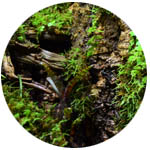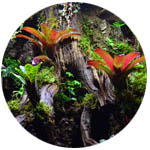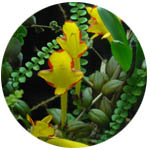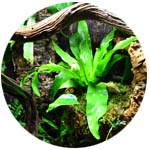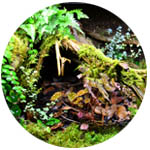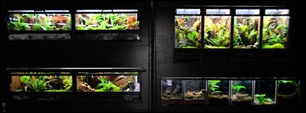
Mourning Gecko Care
How to successfully care for & breed Lepidodactylus lugubris
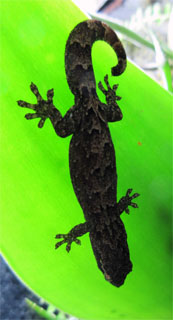
Introduction
Mourning Geckos are a small, social, insectivorous-frugivorous Gecko. Aptly named for being "in mourning" of their lost (male) counterparts, this is a primarily female, parthenogenetic species which reproduces asexually. (That is, without a mate!) If you are curious, we recommend reading more about parthenogenesis on this Wiki page. Lepidodactylus lugubris was originally found in coastal & island areas spread around the Indian & Pacific oceans, and has also been introduced to areas in South America, and even Hawaii. This article will go over everything from how we care for our Mourning Geckos here at NEHERP, down to how we care for the eggs & hatchlings.Appearance and Behavior
Mourning Geckos are a smaller Gecko, slowly growing to just over 3 inches in length. We'd consider this a very easy Gecko to work with, and they make perfect live vivarium candidates. Their tiny size & fairly quick nature can make handling difficult, so we'd recommend treating these as more of a species to observe, rather than one to interact with. Keeping them in groups has proven to allow for lots of social interaction, between individuals. These extremely entertaining interactions include the Geckos squeaking & clicking at one another, as well as other fascinating behavior like tail waving. Occasionally light nipping/biting may occur between Geckos, especially for enclosure-mates who are being housed together for the first time. In our experience, we've never seen one injure another, and we like to believe this is more about establishing a pecking-order, rather than displays of aggression. Typically these little Geckos are shy at first, but once they acclimated to a vivarium, it's very common to see them out & about. Color brightness may change over the course of just a few minutes from dark to light, although the overall pattern & hue stays the same.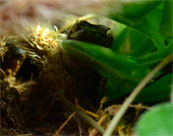
What to Look For When Purchasing a Gecko
First and foremost, we strongly suggest purchasing from a breeder over a pet store, for the healthiest specimen & best service after the sale. It helps knowing the previous diet, living conditions, and handling routines of the Gecko, which most breeders are happy to help describe.Housing & Caring For Mourning Geckos
Mourning Geckos are an arboreal species, requiring an enclosure with emphasis on height over width. The specifics of an enclosure will depend heavily on the age of the Gecko being cared for, so we've divided this section into appropriate age groups.
Geckos younger than 6 months require special housing. For the simplicity of caring for growing hatchlings, we house two per 32oz deli cup using Vented Metal Mesh Lids, until they are well started. (We'd consider a well started Gecko to be 2 months old & eating well) We use New Zealand Sphagnum Moss as the substrate, as it holds moisture very well & can help ensure the little Geckos can shed easily. These cup enclosures should be misted 1-2X daily, and can also include easy to clean decor. We feed hatchlings a dime-sized blob of Gecko MRP every other day, in up-turned film canister lids, but anything similar in size would work. Using a small feeding dish helps to ensure the young Geckos don't accidentally get coated in MRP, especially around their hands & feet! If a young Gecko has an abundance of MRP stuck on it's hands, feet, or face, it greatly increases the risks of a difficult shed, may damage the Gecko's skin (if it's allowed to dry), or worse. Drosophila melanogaster Fruit Flies dusted with Repashy Calcium Plus are also offered once weekly. As with all hatchling species feeding on live insects, we strongly recommend offering a small amount at first, to ensure the animal will accept & eat the prey. Otherwise, an abundance of uneaten feeder flies can stress the Geckos.

Once a Gecko is over 2 months old, eating well, and growing at a healthy pace, they can be housed in a grow-out enclosure, or even a well-designed permanent home. (More on that in the next section) Once a Gecko is a Juvenile, we increase it's MRP amount to a nickel sized blob (per Gecko), with larger groups of Geckos receiving 1.5oz deli cups about 1/4 full of MRP. Feeder flies are offered in larger numbers, while still being careful to not overwhelm the enclosed Geckos. As Geckos approach 2in in length, larger hydei feeder flies can be offered, and eventually make a more suitable prey item than the smaller melanogaster fly. Misting is still done twice daily for juvenile Geckos. Important: Young Mourning Geckos can very easily escape Exo Terra, Zoo Med, Tetra Fauna, and similar enclosures with wire access ports. These are tiny, flexible little Geckos! Be sure to block any tiny openings you may find before using a larger enclosure style to house this species! Kritter Keeper style enclosures are not suitable or recommended for this species.

At this point, D. hydei feeder flies are usually our primary live feeder, with Gecko MRP remaining as a staple diet. Small Phoenix worms can also be offered, but unlike flies, they should not be dusted with additional supplementation. In our experience, Mourning Geckos begin to lay eggs around 9-10 months old, although as early as 8 months has been reported. Once Mourning Geckos approach sexual maturity, we recommend building an appropriate live vivarium enclosure for the Geckos to reside in. We recommend a bare minimum of 3.5 gallons of space per adult Gecko, with larger enclosures always being better! (You can check the gallon-displacement of every common enclosure at the top of every page in our Vivarium Builder) This species loves having access to hiding places, so building a custom background with plenty of ledges & vining/trailing plants is a great practice. These are a small enough species that even incredibly delicate plants can be used without fear of the Geckos causing damage. Building a vivarium with a ton of places for a Gecko to hide out of view may seem counter-intuitive, but they will be more likely to be out on display if they are comfortable knowing that shelter is just "one jump away". All of our vivarium kits (Complete Viv Kits, Lighting Kits, Substrate Kits (V2 Substrate), Plant Kits, and Custom Background Kits) are very well suited to Mourning Geckos, and each can be tailored to this species specifically.


Environmental Conditions
While this species can tolerate a fairly wide range of conditions, we've found that the below specifications have helped us to foster healthy animals while encouraging prolific reproductive activity. These stats apply to all ages of Mourning Geckos, however hatchlings are usually kept toward the higher-end of humidity to ensure easy sheds for the younglings.Day Time Temperature: 70-80F
Night Time Temperature: 65-75F
Additional Heat Source: Necessary only if room temperatures will commonly drop below 65F, in our experience.
Lighting: Use whatever is recommended for your size vivarium, timed for 12 hours on, 12 hours off
UVB: Arguably beneficial, but many sources say this is unnecessary. (The jury is still out on this one, but we use UVB @ NEHERP!)
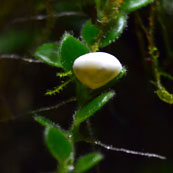
Breeding Mourning Geckos
Due to it's parthenogenetic nature, this species is incredibly easy to breed. Mourning Geckos are an egg-gluing species, which means they lay soft eggs which are "glued" into place by the Geckos. Eggs are usually laid in pairs, although they aren't always placed next to each other. These eggs should not be attempted to be removed from the surface where it's originally laid, as they will almost always crack in the process. There are two ways to go about the management of this species of eggs, with each described below.Alternatively, the eggs can be left inside the vivarium to develop naturally. Once the eggs hatch, the hatchling Geckos should be promptly removed from the vivarium, and placed in a grow out enclosure. This hands off approach is easier in our experience, but extra care must be taken to ensure the adult Geckos are very well fed to discourage cannibalization of the tiny hatchling Geckos. We use the "in vivarium" approach at NEHERP and have never witnessed cannibalization, but we've read about it being a possibility. In our experience, the risks are minimal if the vivarium is well planted, plenty large, and the adults are very well fed.




